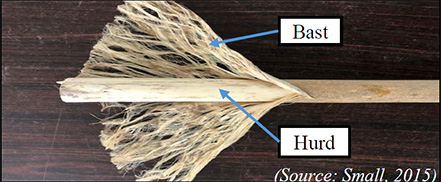
Industrial hemp (Cannabis sativa L.) is a multipurpose crop cultivated worldwide for its fiber, grain (seed), and cannabinoids such as cannabidiol (CBD). Unlike marijuana, industrial hemp contains less than 0.3% THC (delta-9 tetrahydrocannabinol), making it non-psychoactive and federally legal to grow in the United States under the 2018 Farm Bill (Johnson, 2019). Industrial hemp varieties are typically grouped based on their primary end use. Selecting the right hemp variety is essential for maximizing yield and profitability in a given production system.
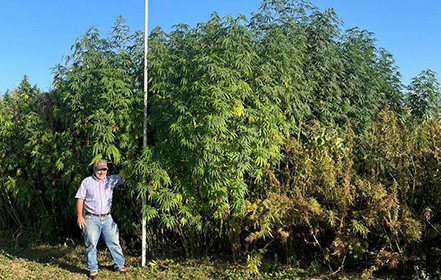
Fiber varieties
- Fiber hemp varieties are bred for their long stalks, low lignin content, and high bast fiber yield (Fike, 2016).
- Two types of fiber: Outer long fibers called bast fibers (primary fibers) and inner short fibers called hurd (Fig. 1)
- Plant height: 10–15 feet
Key traits:
- Long vegetative growth
- Late flowering
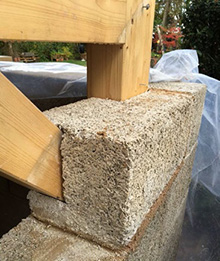
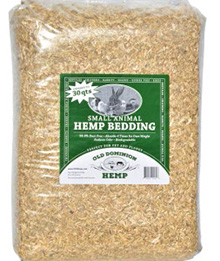
- Tall stature with slender stems (Fig. 2)
- Minimal branching
- Low seed and cannabinoid production
- Dense planting to encourage vertical growth
Uses:
- Textiles (linen-like fabrics)
- Paper products
- Insulation and bioplastics
- Construction materials (hempcrete, fiberboard) (Fig. 3)
- Animal bedding and mulch (from inner woody core called hurd) (Fig. 4)
Grain (seed) varieties
Key traits:
- Early flowering and maturity
- Bushier plant with more branches
- High seed yield with large seed heads (Callaway, 2002)
- Lower stalk biomass
- Shorter height (5-7 feet) compared to fiber varieties
Uses:
- Human food (hemp seeds, protein powders, cooking oils)
- Industrial oil and biodiesel (Fig. 5)
- Hemp seed meal for livestock
- Cosmetic and skin care products

Cannabinoid (CBD) varieties
These varieties are cultivated for their high CBD content. They often contain very low THC levels (Kolarcik, 2022). They are typically female-dominant and grown under strict conditions to avoid pollination, which reduces CBD yield.
Key traits:
- Short to medium height (3–6 feet) and bushy structure
- High floral biomass with trichome-rich flowers (Fig. 6)
- Sensitive to photoperiod
- Grown at low plant densities to allow full-floral development
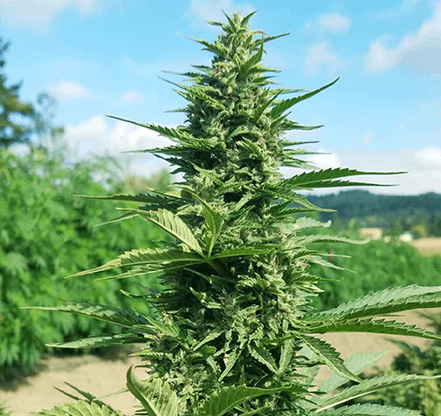
Uses:
- Cannabidiol (CBD) oils and tinctures
- Wellness and therapeutic products
- Nutraceuticals and dietary supplements
- Cosmetic formulations (lotions, balms, and serums)
Dual-purpose varieties
Dual-purpose hemp cultivars offer fiber and seed yields. They are a good fit for growers seeking diversified markets, especially in early-stage hemp economies.
Key traits:
- Intermediate height (6-9 feet) and branching
- Balanced output of both fiber and seed
- Mature early for seed harvest
- Often more adaptable to different environments cropping systems
Uses:
- Fiber-based materials (textiles, pulp)
- Grain for oil, food, or feed
- Bioremediation and rotational crop benefits.
References
- Amaducci, S., Zatta, A., Pelatti, F., & Venturi, G. (2008). Influence of agronomic factors on yield and quality of hemp (Cannabis sativa L.) fibre and implication for an innovative production system. Field Crops Research, 107(2), 161–169.
- Callaway, J. C. (2004). Hempseed as a nutritional resource: An overview. Euphytica, 140(1), 65–72.
- Fike, J. H. (2016). Industrial hemp: Renewed opportunities for an ancient crop. Critical Reviews in Plant Sciences, 35(5–6), 406–424.
- Johnson, R. (2019). Hemp as an Agricultural Commodity (CRS Report RL32725). Congressional Research Service.
- Small, E. (2015). Evolution and Classification of Cannabis sativa (Marijuana, Hemp) in Relation to Human Utilization. Botanical Review, 81(3), 189–294.